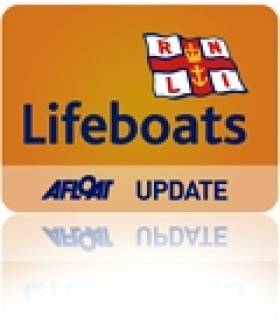Displaying items by tag: slaney
Four of the eight rowing boats involved in a triathlon got into difficulty as strong wind over tide caused dangerous waves which swamped the boats and capsized one. The boats were spotted by members of the Wexford Harbour Boat Club who had safety boats in the water as part of their weekly sailing practice. The Wexford RNLI Lifeboat was training at the time and came to the assistance of the rowers, some of whom were in the freezing water for ten minutes. Conditions were challenging with a southerly force 6 and wind over tide which resulted in seas of 3 foot waves, making it very difficult for the rowers. All rowers were brought ashore.
One hour after the callout, a man was spotted falling from Wexford bridge, at 1:09pm. The quick action of the public and the gardai ensured that the lifeboat, some of whose crew were still at the station was able to launch within minutes of the man entering the water. With the help of the gardai on the bridge who kept a visual on the man the lifeboat crew were able to locate him. The man was unconscious when lifeboat volunteer Frank O'Brien, jumped into the water and pulled him into the lifeboat. First aid was immediately adminstered and the casualty was brought back to the lifeboat station and met by a waiting ambulance.





























































